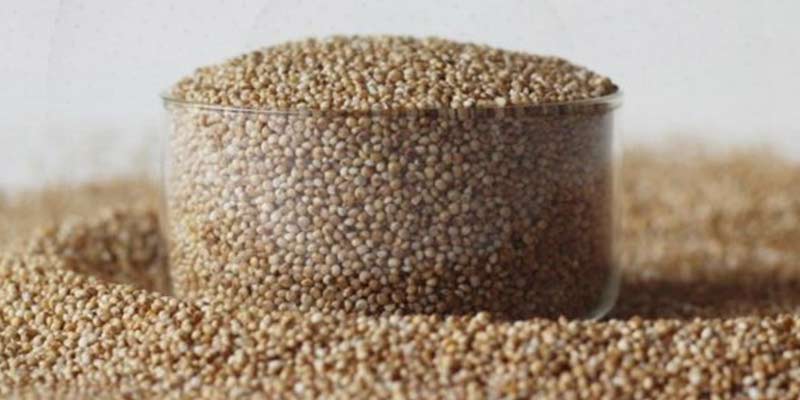- India
- Dec 10
- Kevin Savio Antony
Govt promotes millet-based products under PLI scheme
To promote the use of millets in food products and encourage value addition, the government of India launched the Production Linked Incentive Scheme for Millet-based Products (PLISMBP) for the period from 2022-2023 to 2026-2027, with an outlay of Rs 800 crore.
Key points:
• The scheme eliminates the threshold investment requirement, making it accessible to more applicants.
• To qualify for incentives, companies selected under the scheme must achieve a minimum year-on-year sales growth of 10 per cent over the base year.
• The scheme incentivises sales of branded ready-to-eat and ready-to-cook products in consumer packs that contain over 15 per cent millet by weight or volume.
• As many as 30 beneficiaries were initially enrolled in the PLI Scheme for Millet-Based Products. Following the withdrawal of one beneficiary, there are now 29 beneficiaries.
• According to the scheme guidelines, only domestically sourced agricultural products (excluding additives, flavors, and oils) must be used in the preparation of millet-based products.
• This requirement has boosted local production and procurement of agricultural produce, which has benefited farmers.
• As many as 19 applicants submitted incentive claims, and Rs 3.917 crore has been disbursed to the eligible applicants so far.
What are millets?
• Millets are a collective group of small seeded annual grasses that are grown as grain crops, primarily on marginal land in dry areas of temperate, sub-tropical and tropical regions.
• These grains, some of the earliest plants domesticated for food, were part of the diet even during the Indus Valley Civilization.
India is home to a variety of millets, including:
• Ragi (Finger Millet)
• Jowar (Sorghum)
• Sama (Little Millet)
• Bajra (Pearl Millet)
• Variga (Proso Millet)
• Millets are cultivated in about 131 countries and serve as a traditional staple food for approximately 600 million people across Asia and Africa.
• India: The largest producer globally, contributing 20 per cent of the world’s millet production and 80 per cent of Asia’s output.
• Global Leaders: India, Nigeria, and China together produce over 55 per cent of the world’s millets.
• Although India has historically been a dominant producer, recent years have witnessed significant growth in millet cultivation across Africa, signaling a shift in production dynamics.
Millets are ‘nutri-cereals’
• Millets are uniquely suited to areas with unpredictable weather patterns and water scarcity, thriving in poor soil conditions with minimal water requirements.
• These grains are rich in fiber, protein, vitamins, and minerals, offering a wholesome diet and promoting overall health.
• Millets are an excellent choice for individuals with celiac disease or gluten intolerance, providing a safe and nutritious alternative to wheat-based products.
• Millets can flourish in a diverse range of soils and climates, making them a versatile crop that supports farmers across different regions.
• Often cultivated using traditional farming methods, millets are environmentally friendly and align with sustainable agricultural practices, reducing the ecological footprint of food production.
(The author is a trainer for Civil Services aspirants.)


